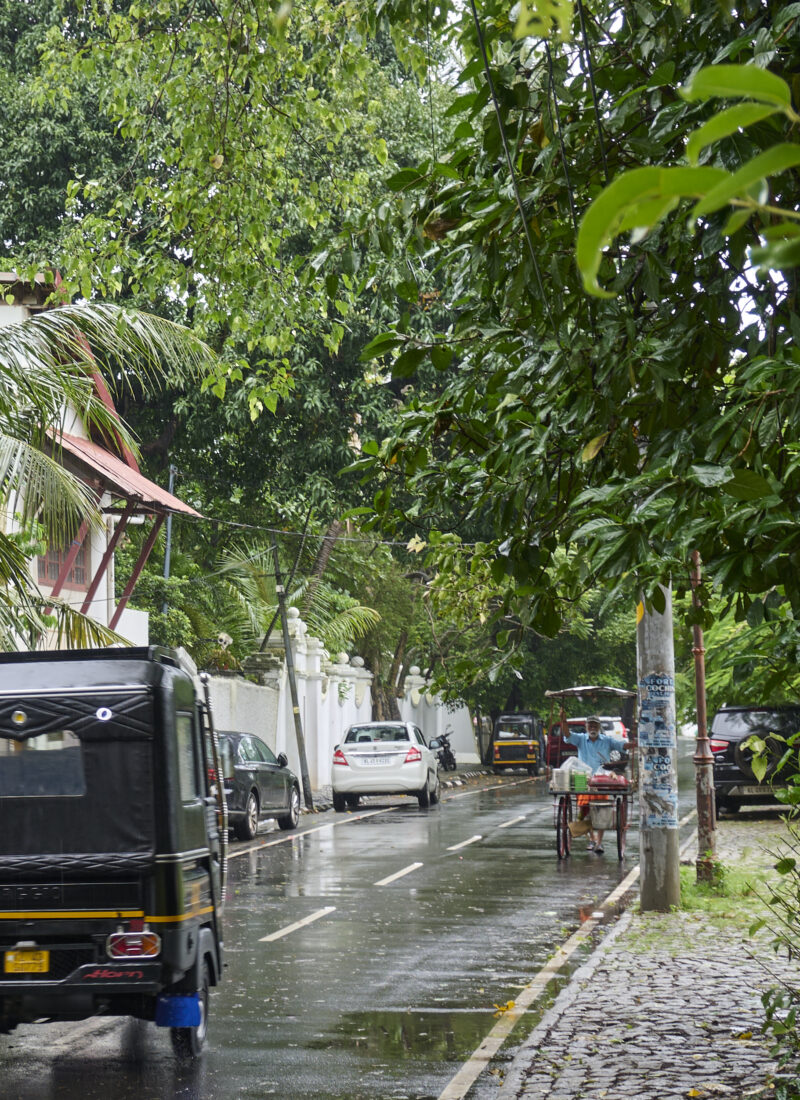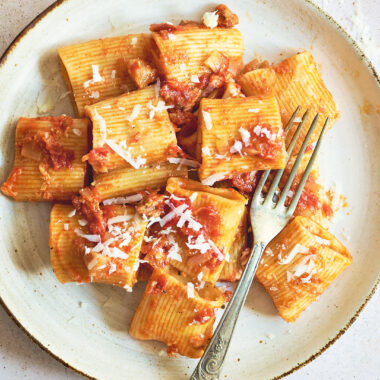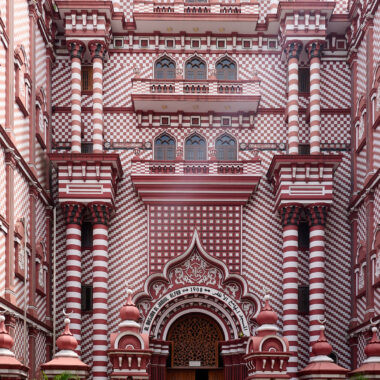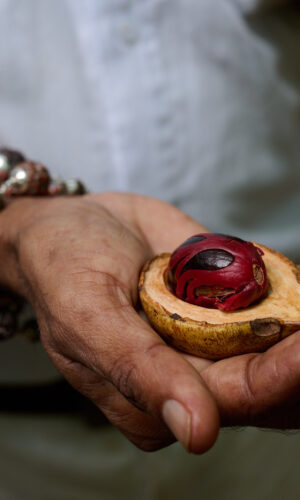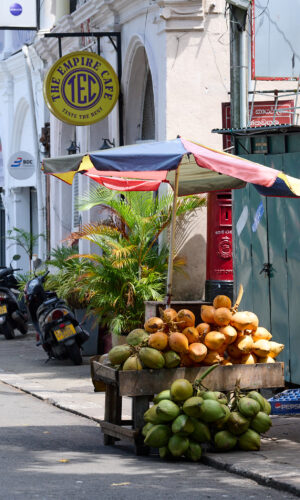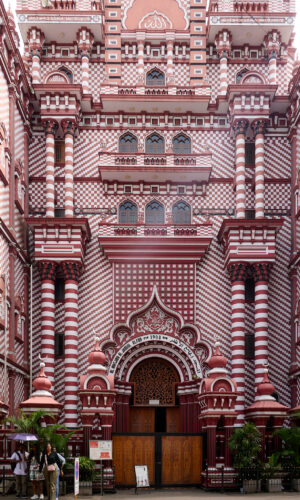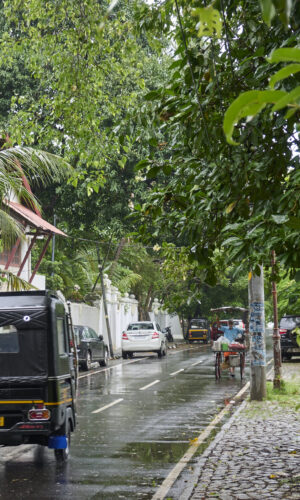I have dreamt of visiting India as long as I can remember, and as we sat waiting to board our flight to Cochin, Kerala, my head was already swirling with all the things I wanted to taste and discover.
Sadly, we only had a 48-hour layover on this trip, barely enough time to scratch the surface of any destination, but we would have to make the best of it. We landed in the early hours of the morning, the monsoon greeting us in full force. Rain lashed the runway as we stepped into Cochin International Airport, the world’s first fully solar-powered airport.
Formalities aside and money exchanged, we headed out into the sticky, humid air. Our driver was waiting, smiling, and soon we were moving through the streets of Cochin in the pre-dawn light, on our way to Fort Kochi. The sun had not yet fully risen, but the city was already stirring — tea houses busy with early customers, tuk-tuks humming along slick streets, and dosa stalls opening for the day. Neon signs flickered in the soft light, puddles glimmering on the wet roads.
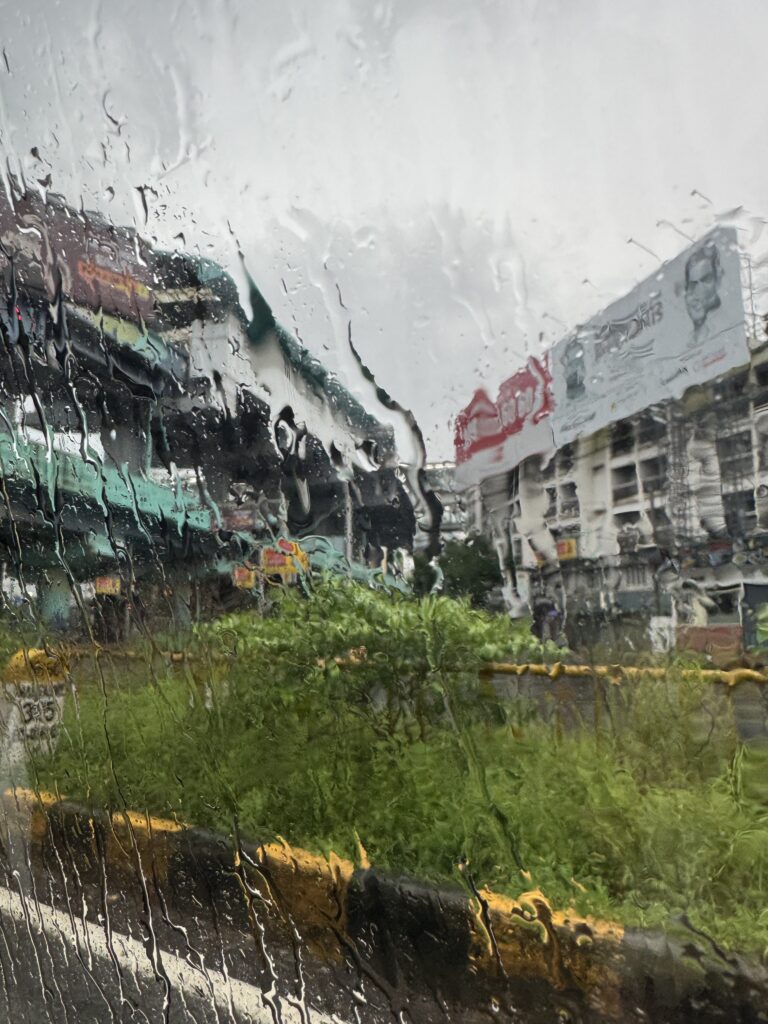
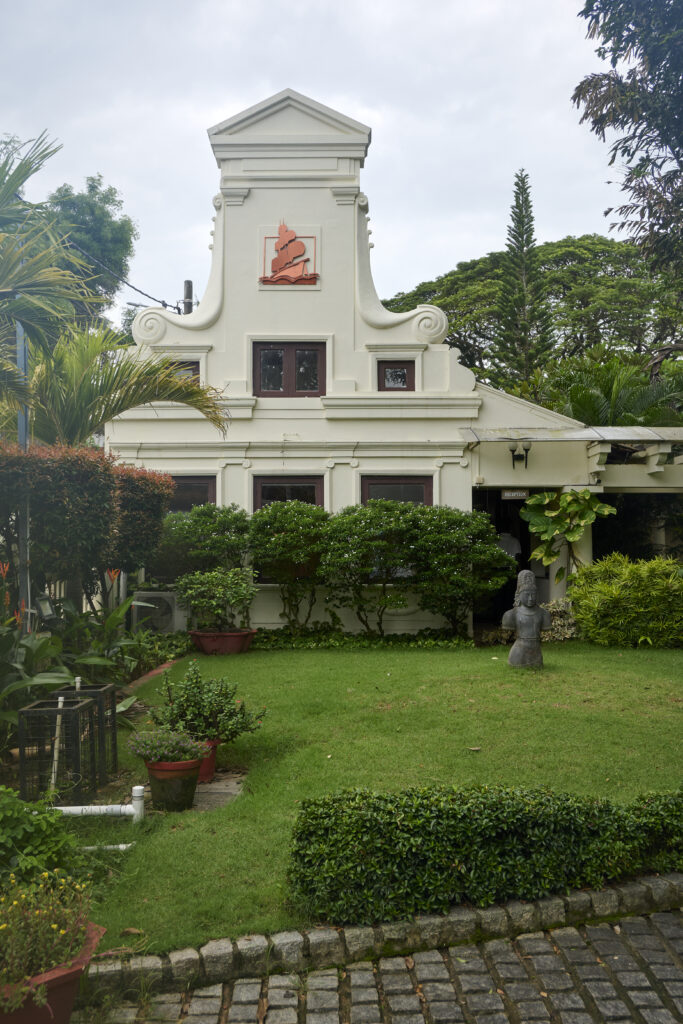
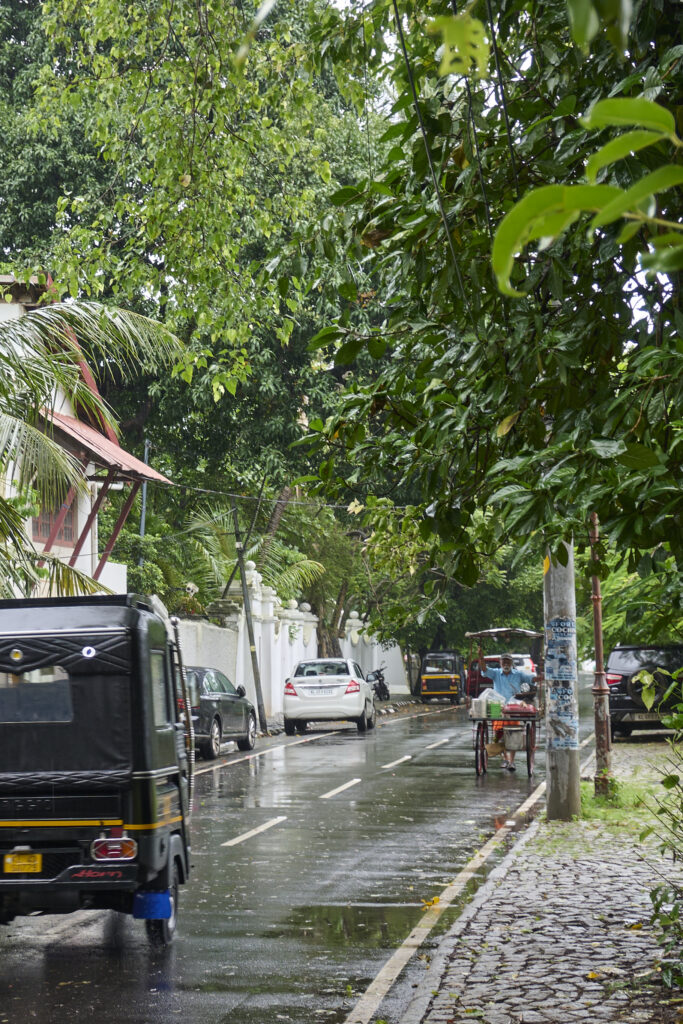
Our hotel, a renovated Dutch colonial building, sat beside the old Dutch Cemetery, a relic of centuries past. We collapsed into bed with the sound of rain still drumming on the roof, and woke a few short hours later, somewhat disoriented but ready for the day.
Fort Kochi is layered with history and flavour, a port city on the Malabar Coast, overlooking the Arabian Sea, where traders and travellers have arrived for centuries. The legacy of Portuguese, Dutch, and British influences are still visible in the architecture and streets. Vasco da Gama died here in 1524 and was buried in St. Francis Church before his remains were returned to Lisbon. The spice trade has been central to this region as far back as 3000 BCE, black pepper, cardamom, and cinnamon, amongst others, flowed from here to markets across Europe, the Middle East, and Asia.
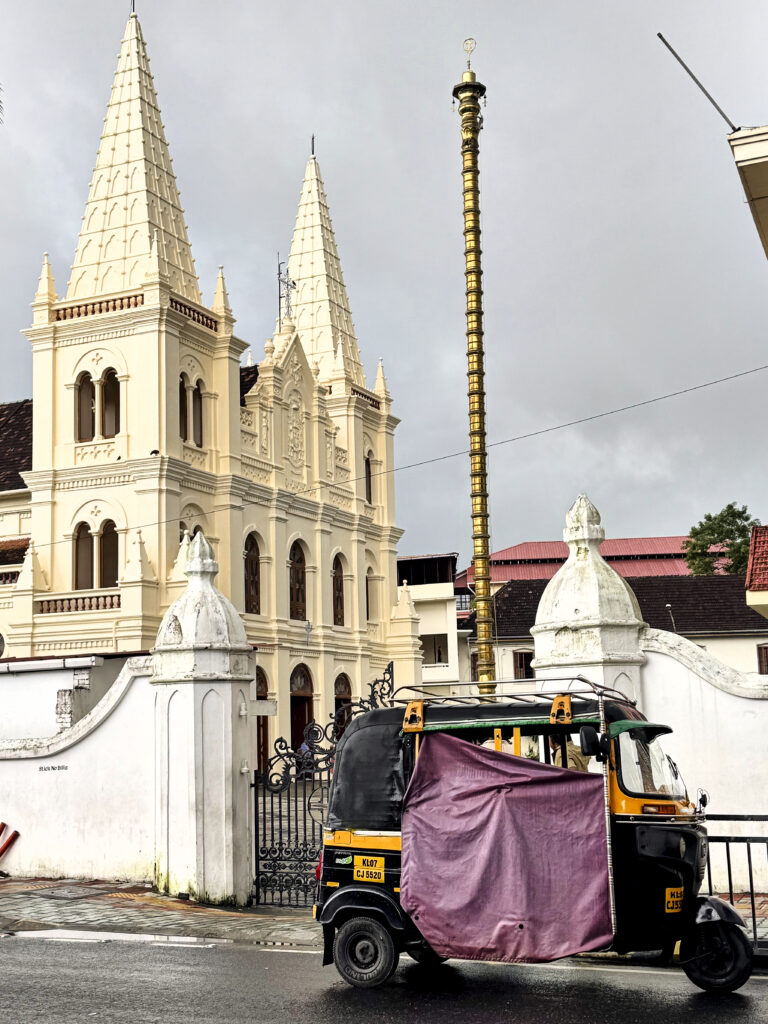
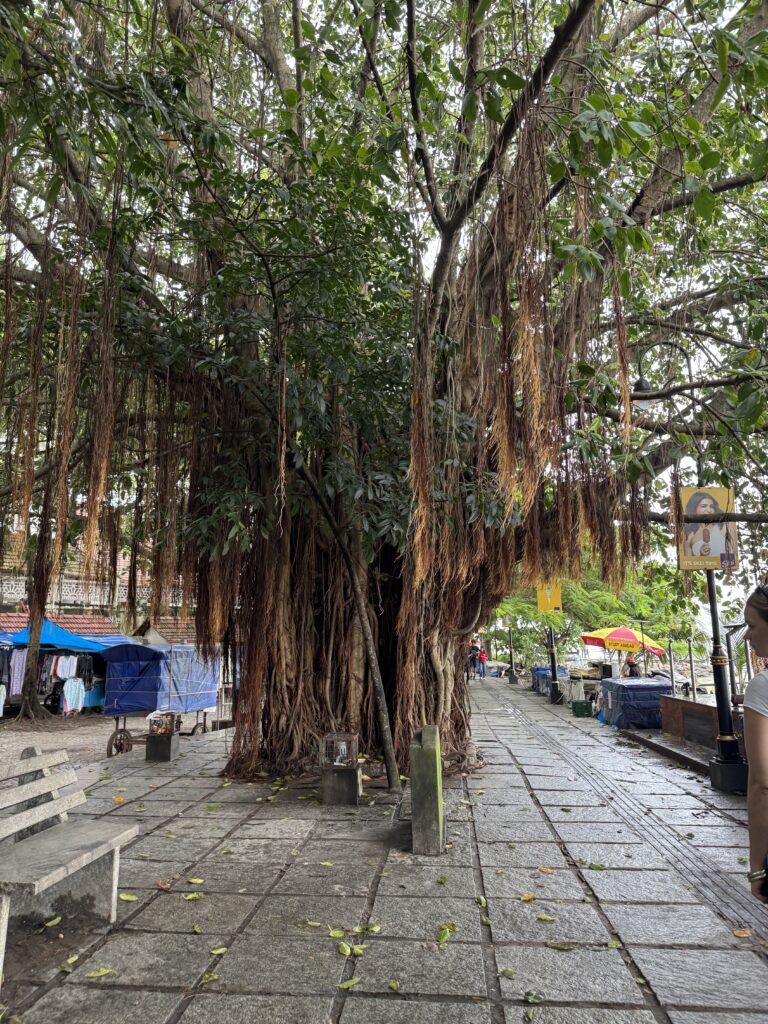
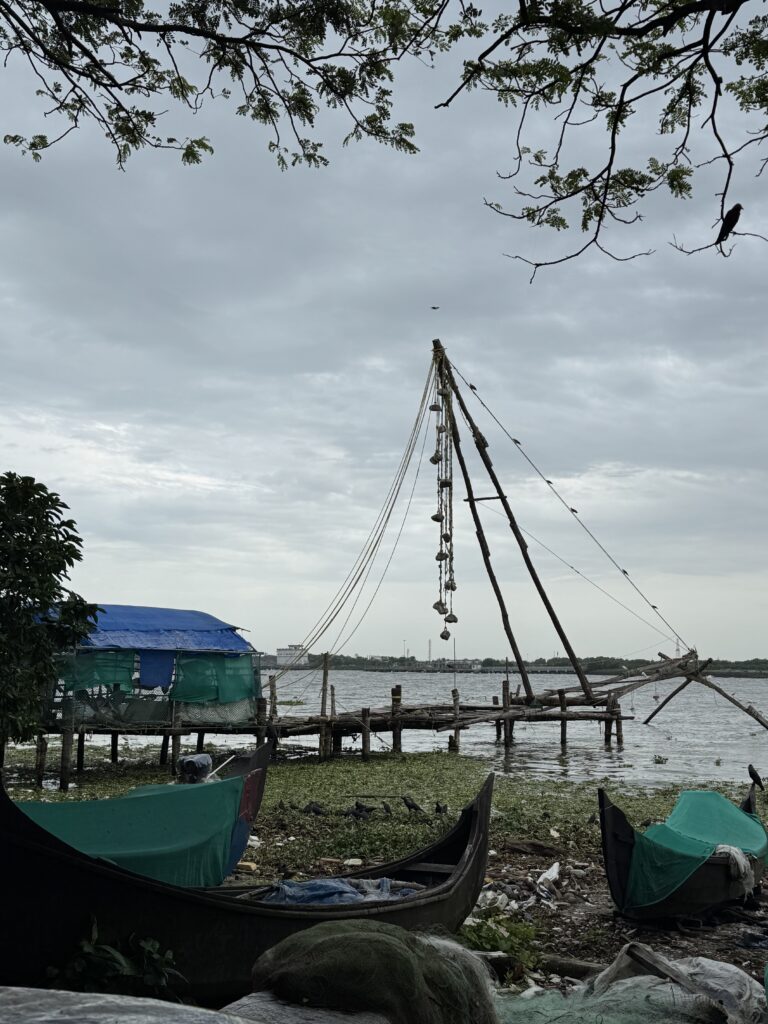
We had the pleasure of joining a cooking class with Nimmy and her husband Paul in their beautiful home. Nimmy has been teaching Kerala cuisine for more than 20 years; the walls are lined with clippings from international papers, and her shelves are stacked with cookbooks from students who’ve come from all over the world to join her classes. She showed us how to balance spices, prepare classic dishes like fish molee, Kerala tomato chicken curry, and a prawn dish made with local Malabar tamarind. We enjoyed a delicious lunch before it was time to bid farewell. It was just a small taste of Kerala’s cuisine, but one I won’t forget anytime soon.
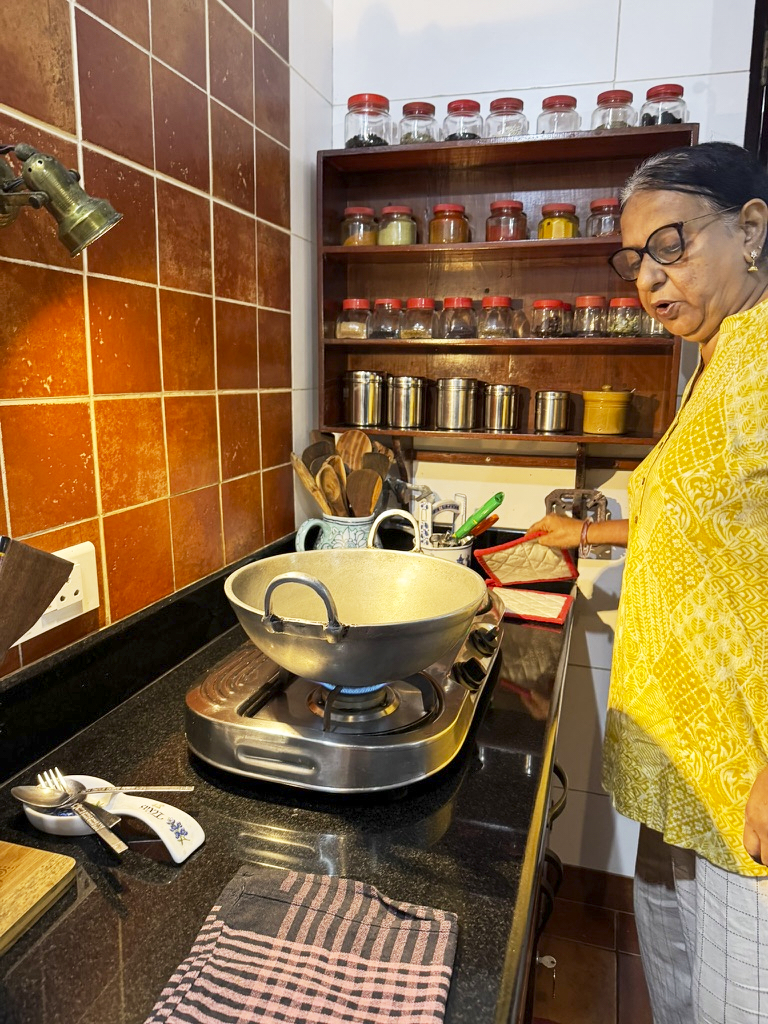
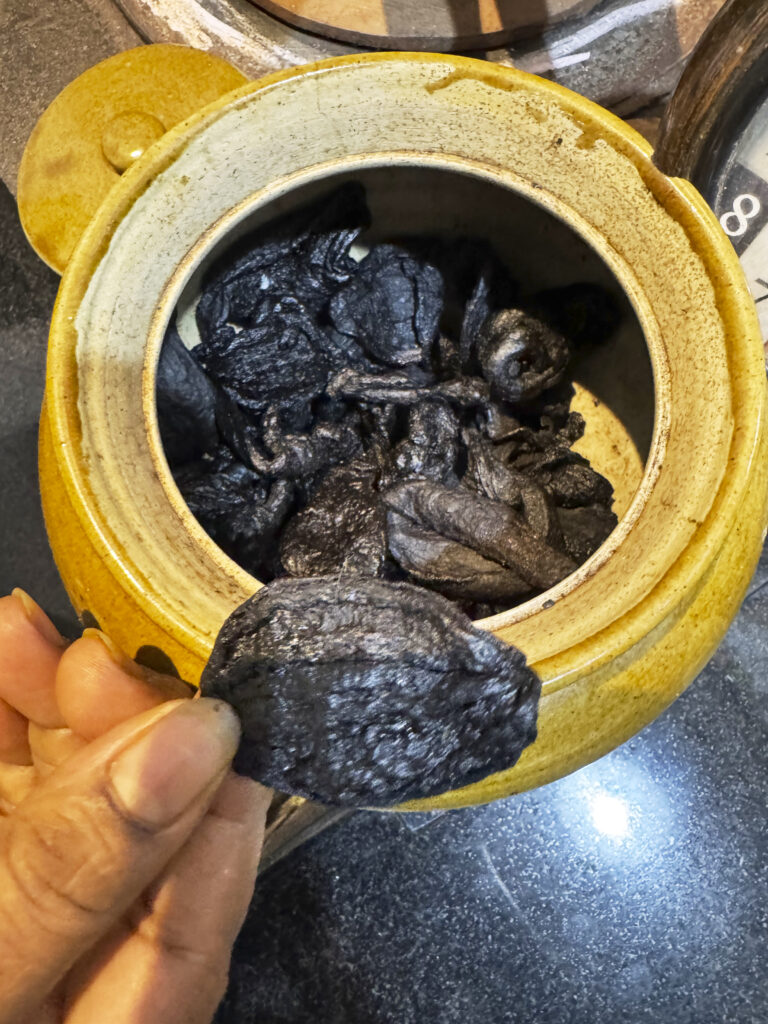
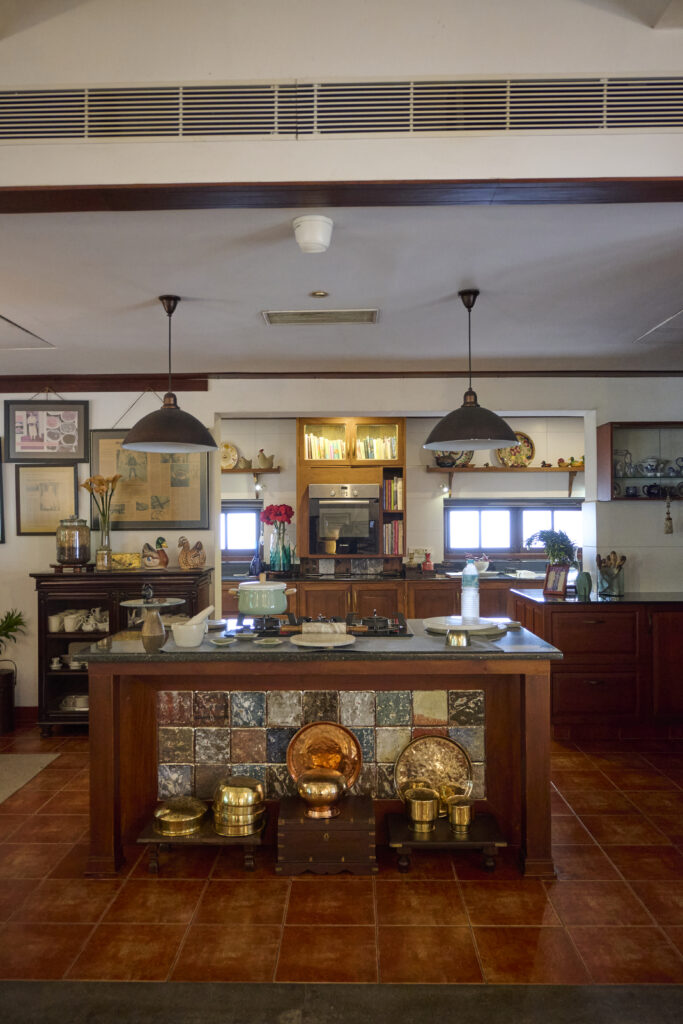
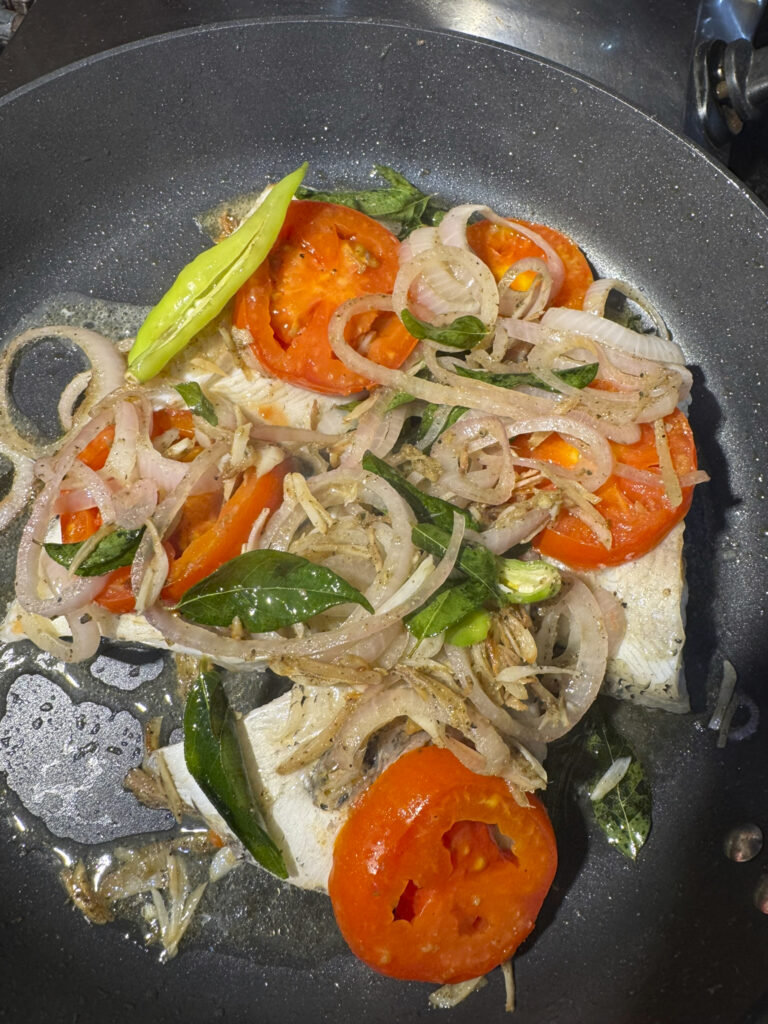
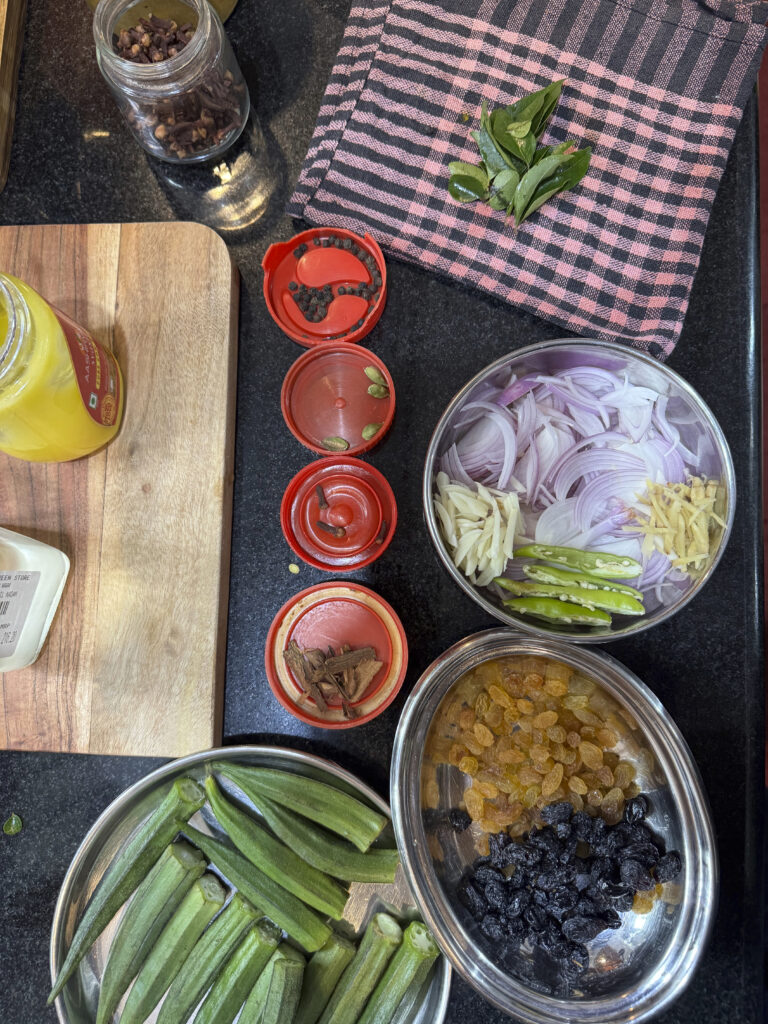
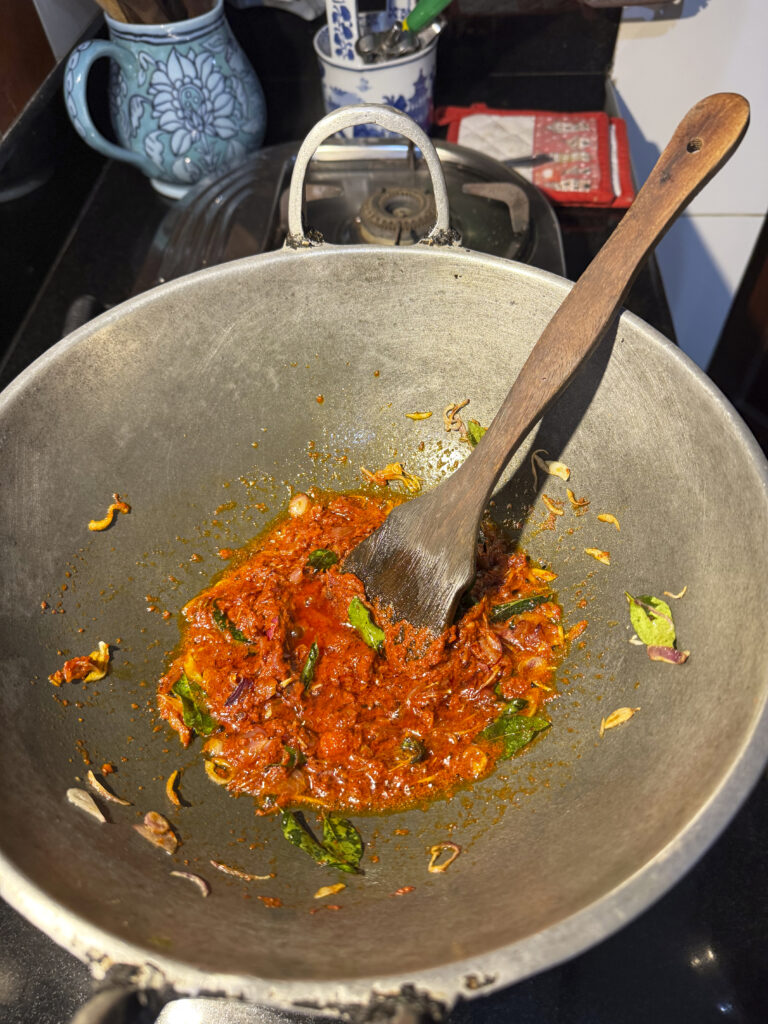
In the evening, we watched a Kathakali performance. This centuries-old art form blends theatre and dance, with performers telling stories through elaborate hand gestures, bold makeup, and striking facial expressions.
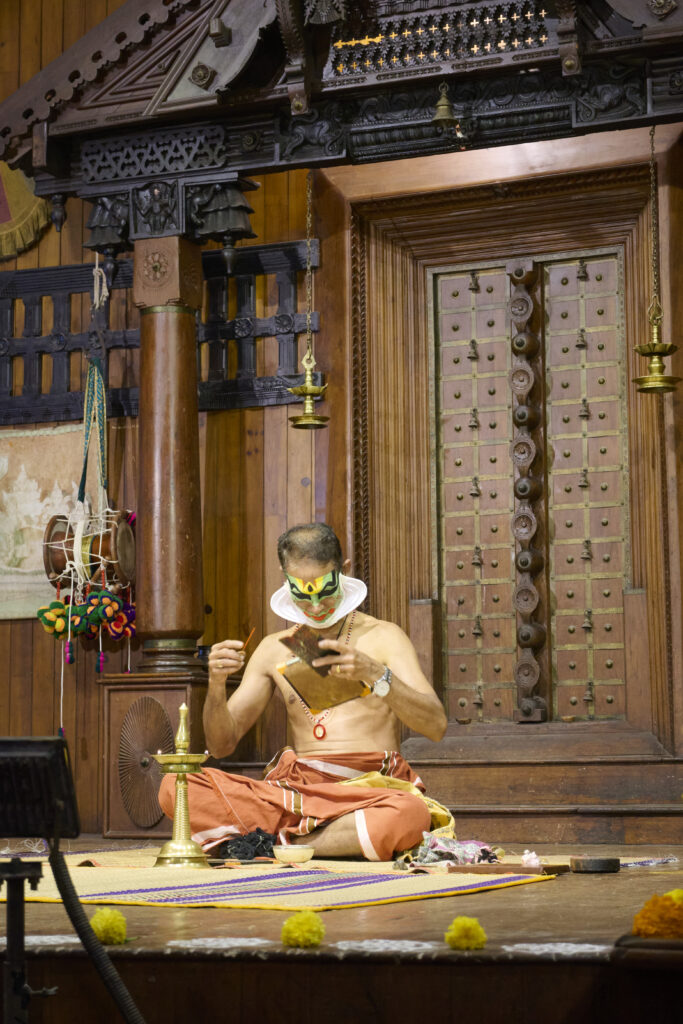
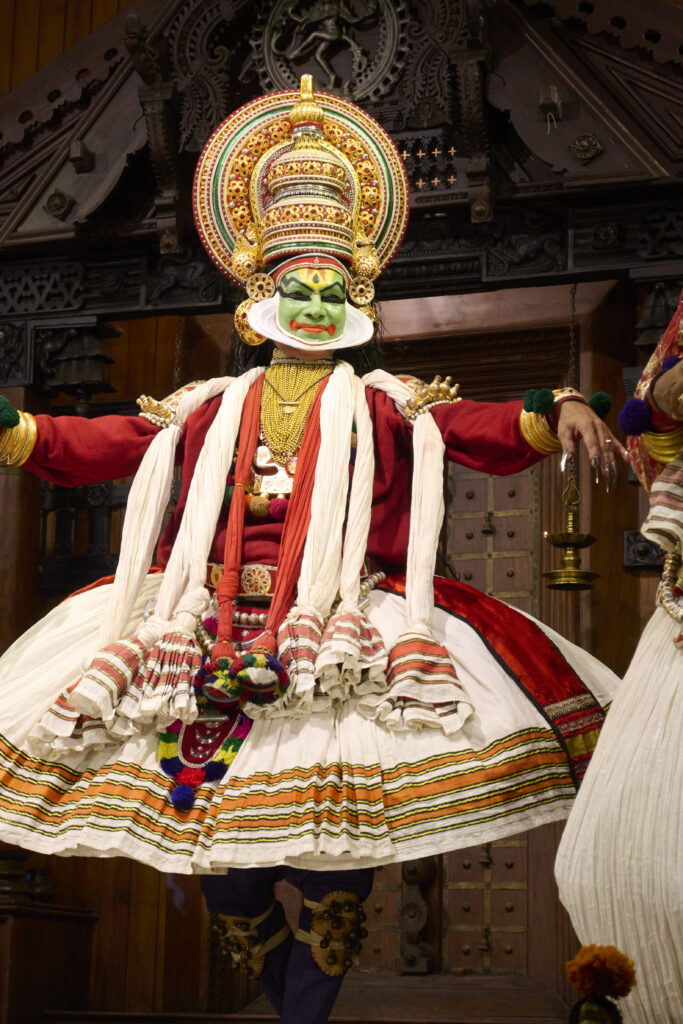
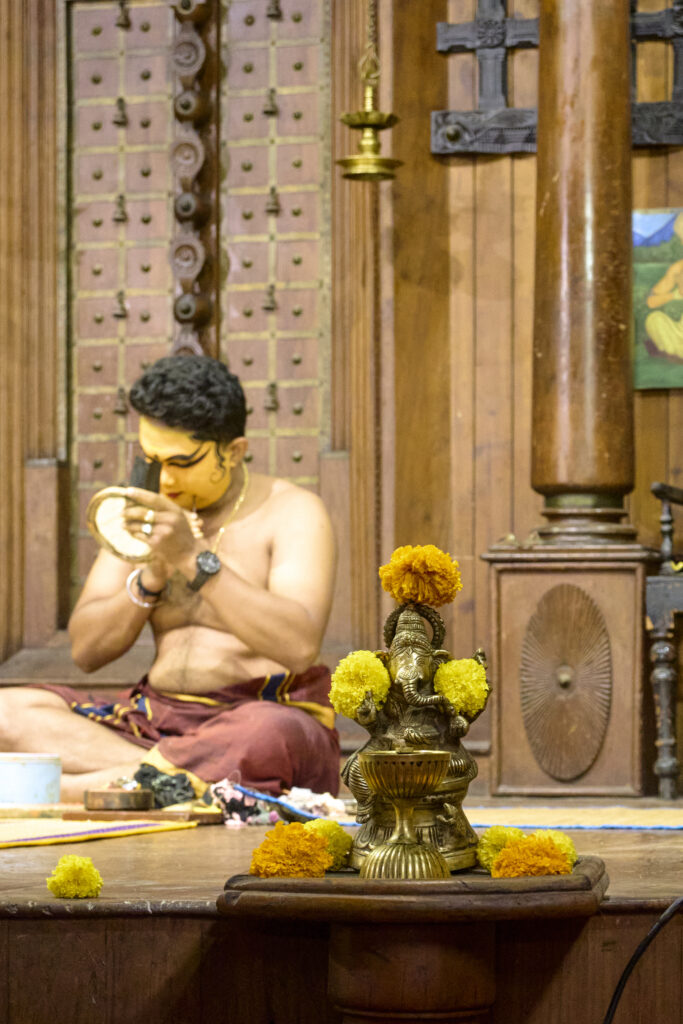
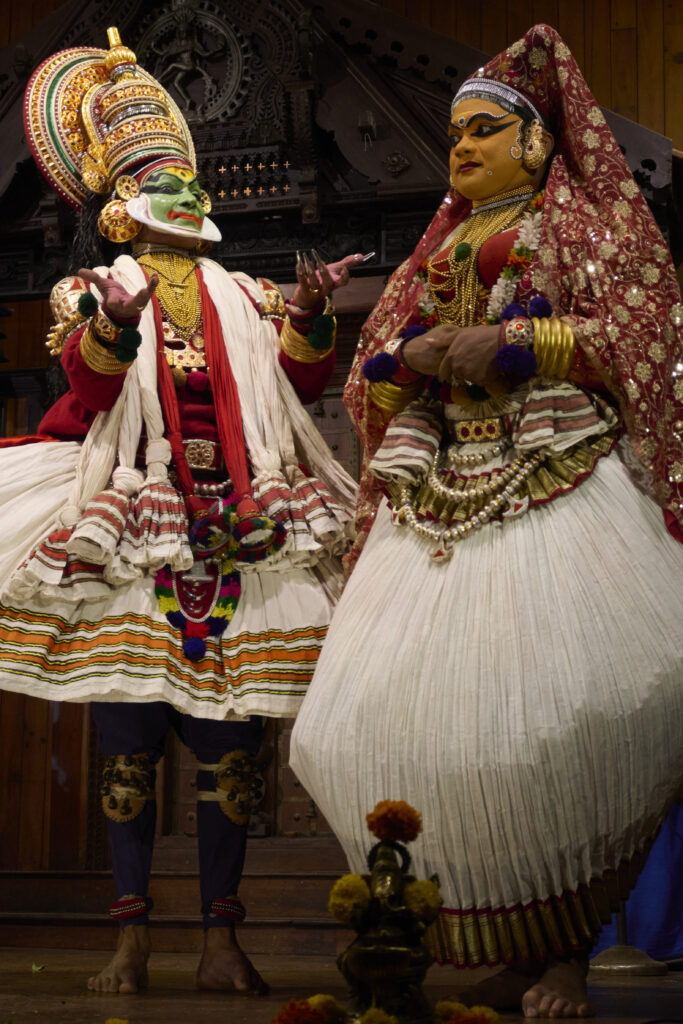
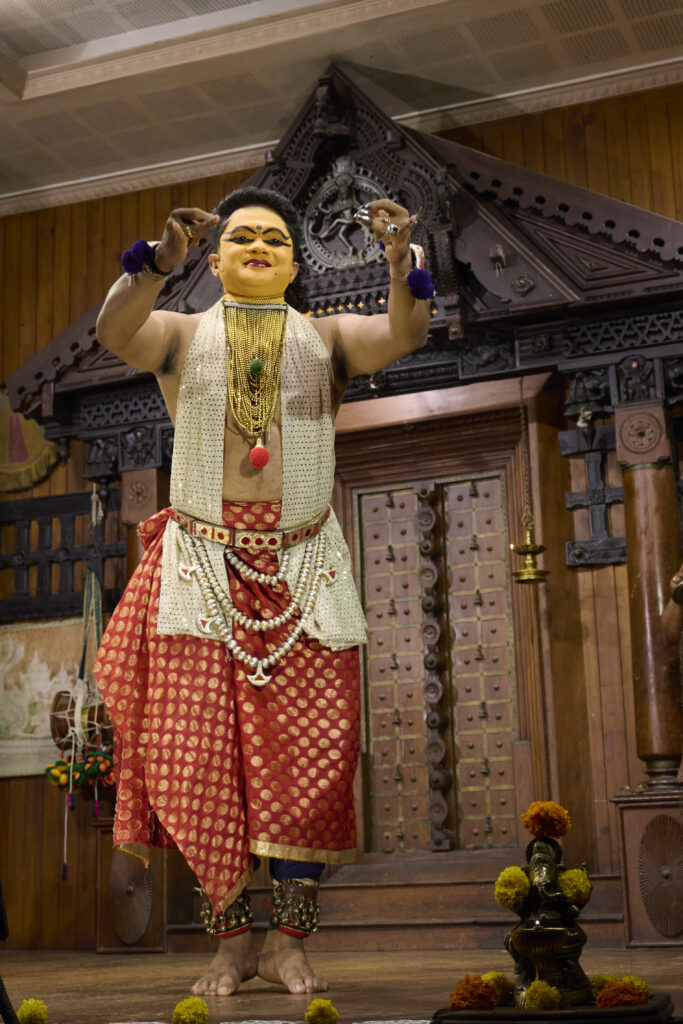
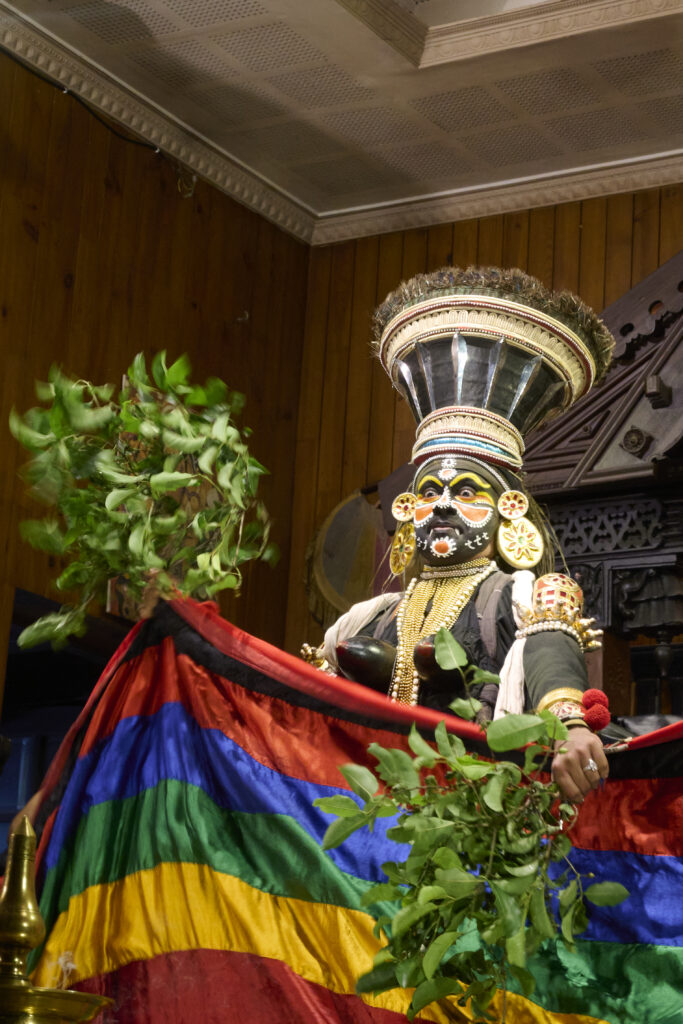
The following day our afternoon tour took us through Jew Town, where narrow streets are lined with low, colourful buildings and small, bustling shops. Modern stores sit alongside old spice warehouses, selling everything from Jaipur block prints to spices and antiques. We stop at a tea house for dosa, dhal, potato bondi and sweet chai, followed by sticky, fragrant local sweets. It’s an easy place to explore on foot, with something interesting around almost every corner. Jewish traders added their own mark in the region, shaping commerce and cuisine, leaving a unique culinary legacy that lingers to this day.
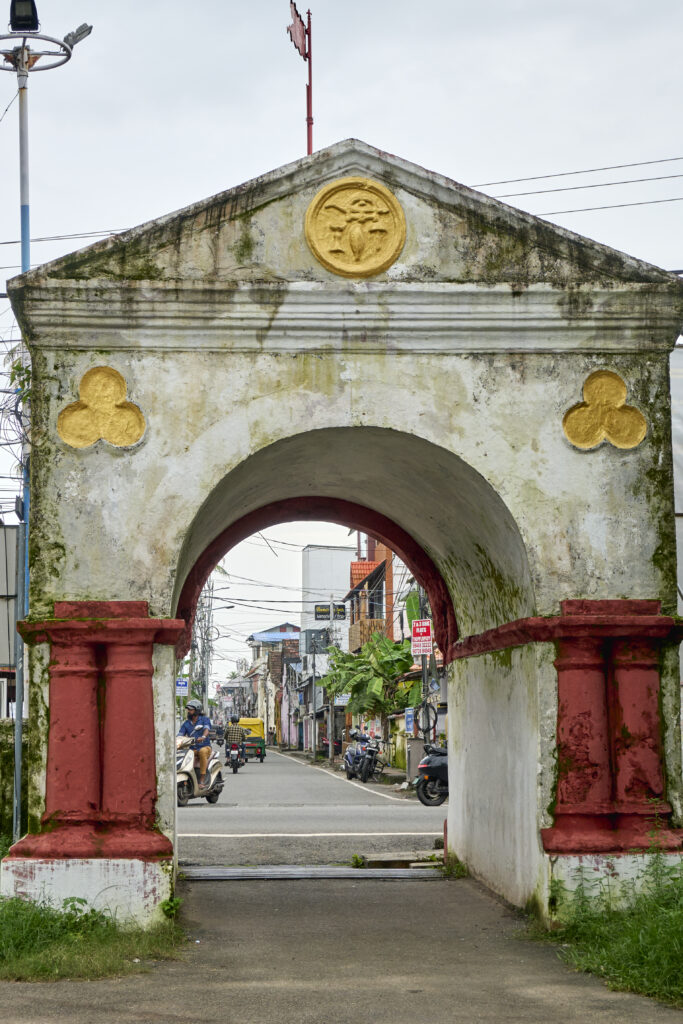
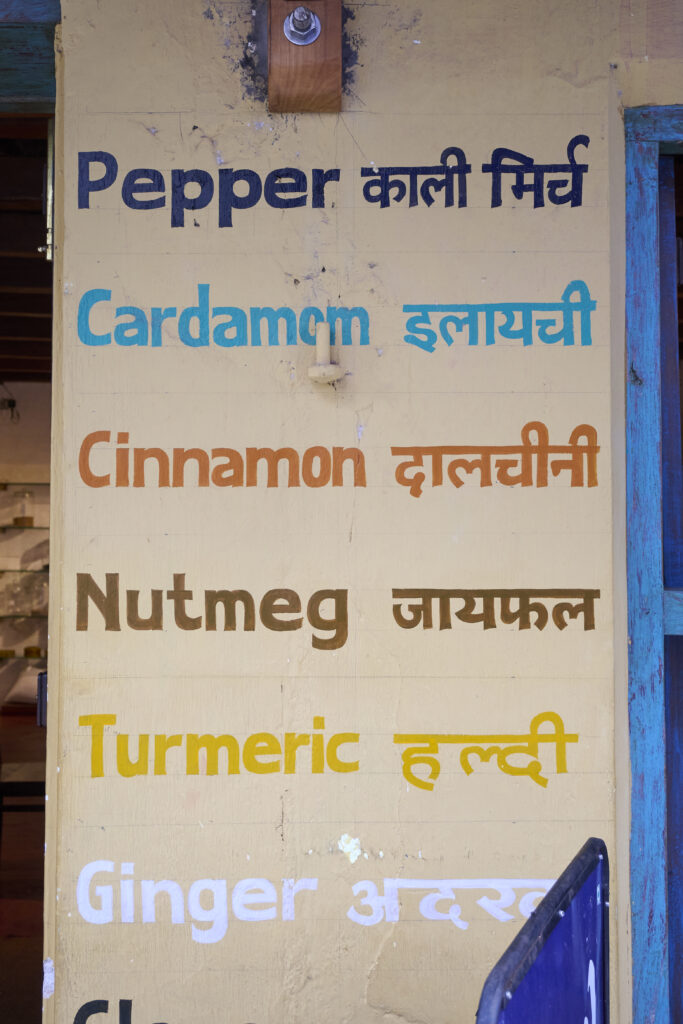
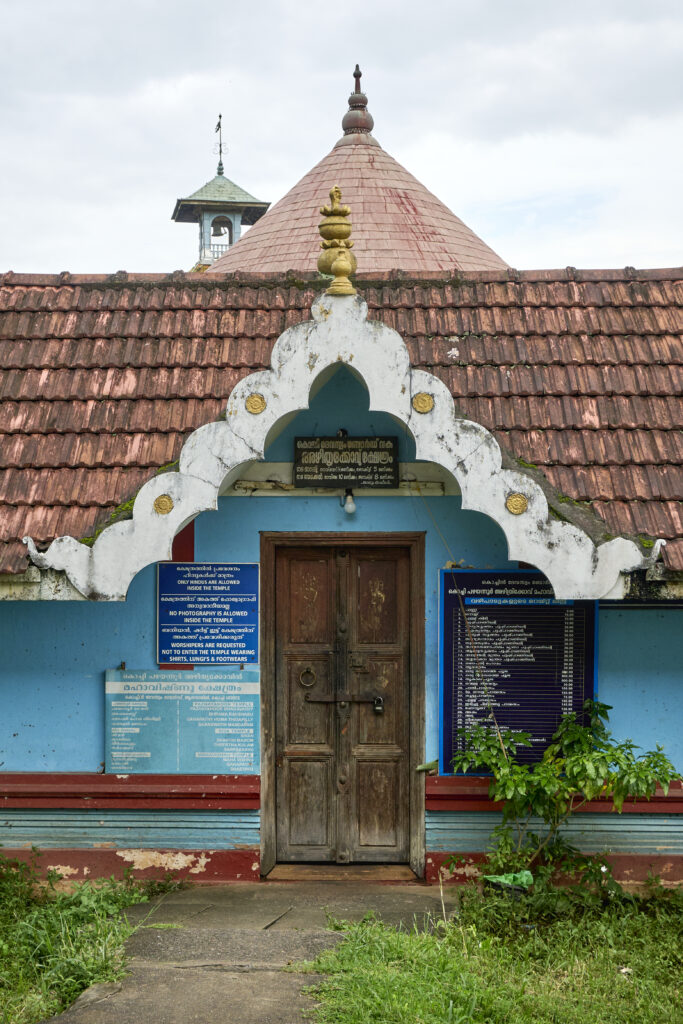
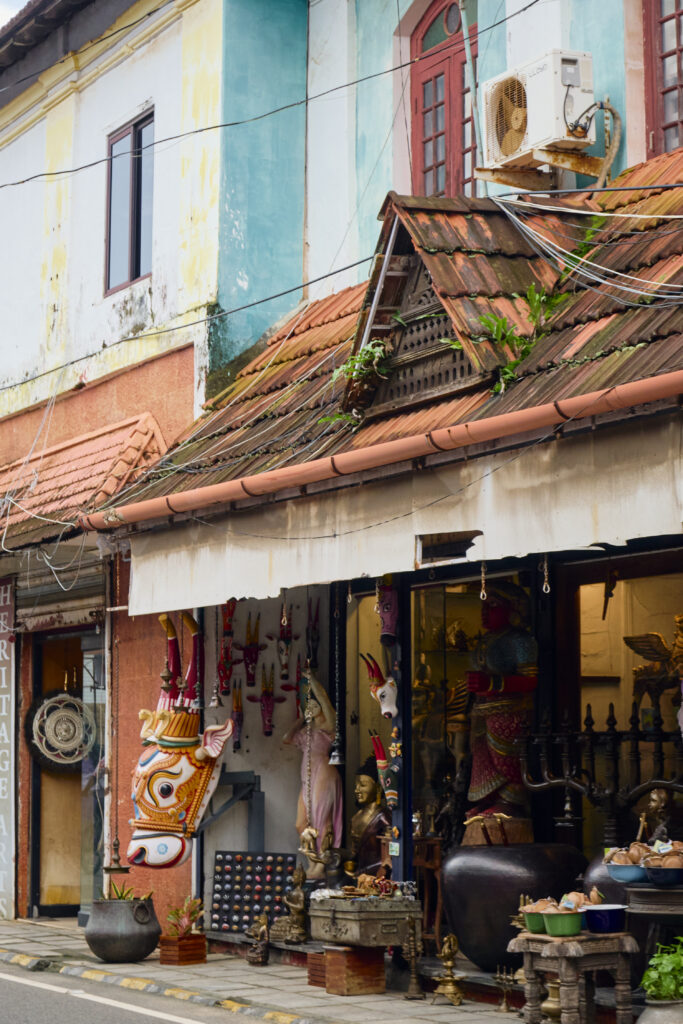
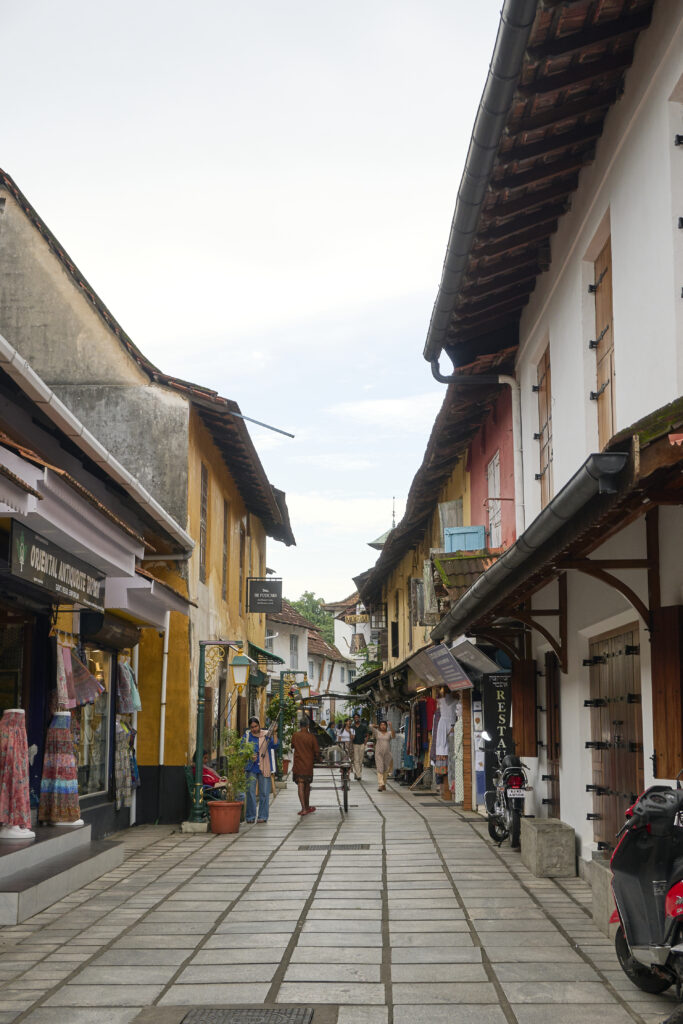
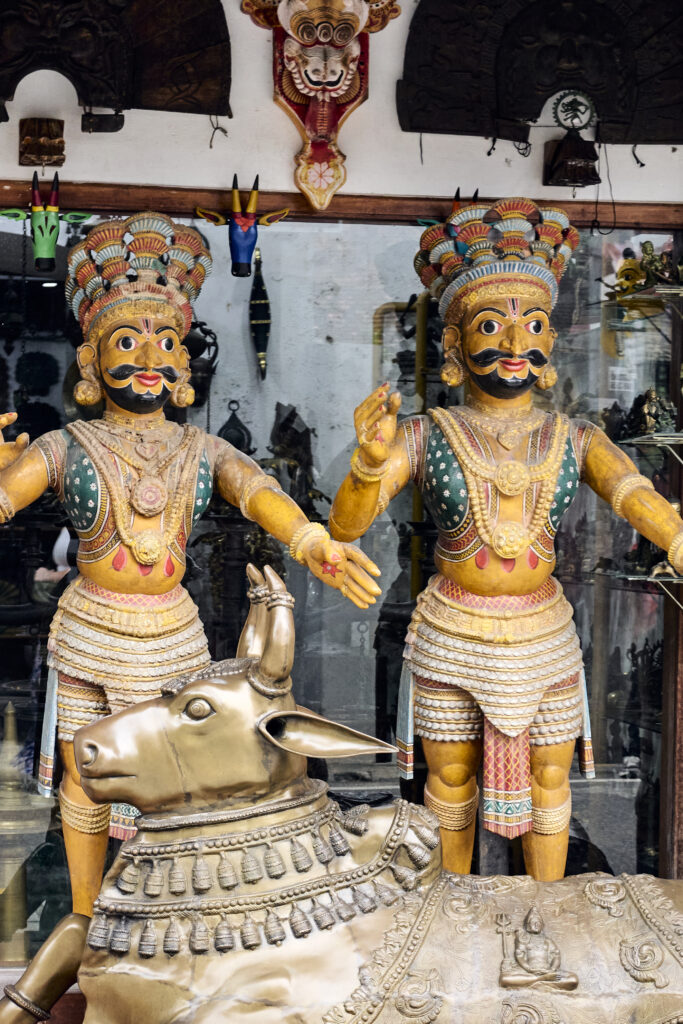
The array of fruits and vegetables in Fort Kochi is a feast for the senses, bursting with fresh produce that’s as colourful as it is diverse. Stalls brim with coconuts and an astonishing variety mangoes in every stage of ripeness. India has approximately 1,500 varieties of mangoes! Several types of bananas hang from the beams, alongside an assortment of gourds, spiny bitter melons, drumsticks (moringa), and other vegetables like Chinese potatoes and ash gourd. Shimmering chillies, leafy greens, and aromatic herbs spill from baskets, reflecting the region’s fertile soil and rich culinary traditions.
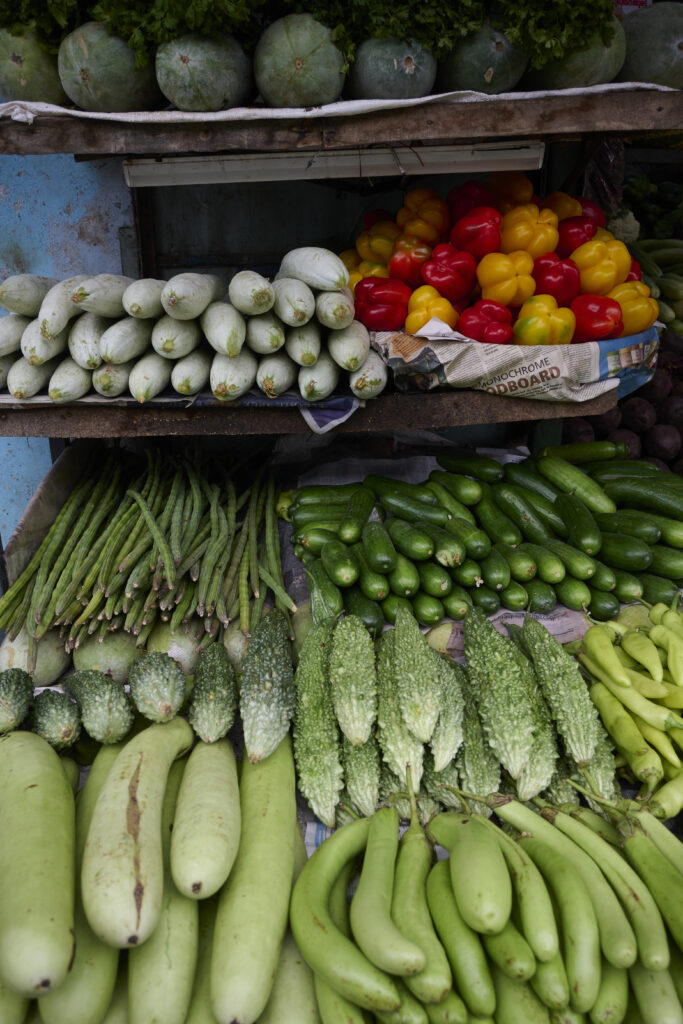
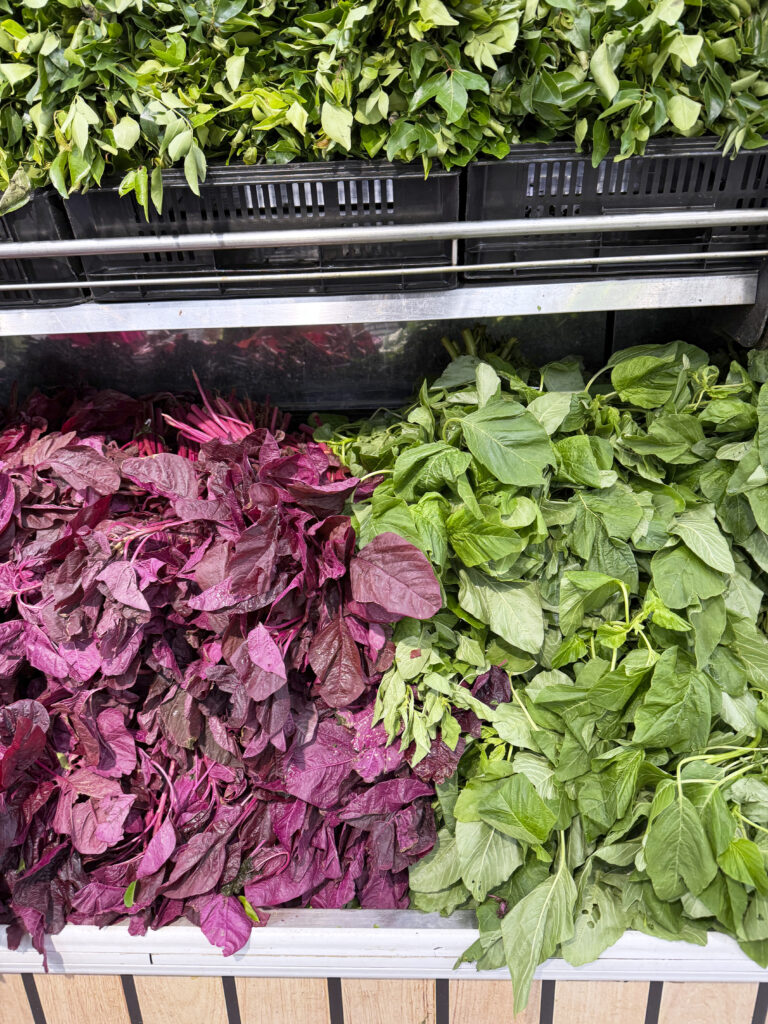
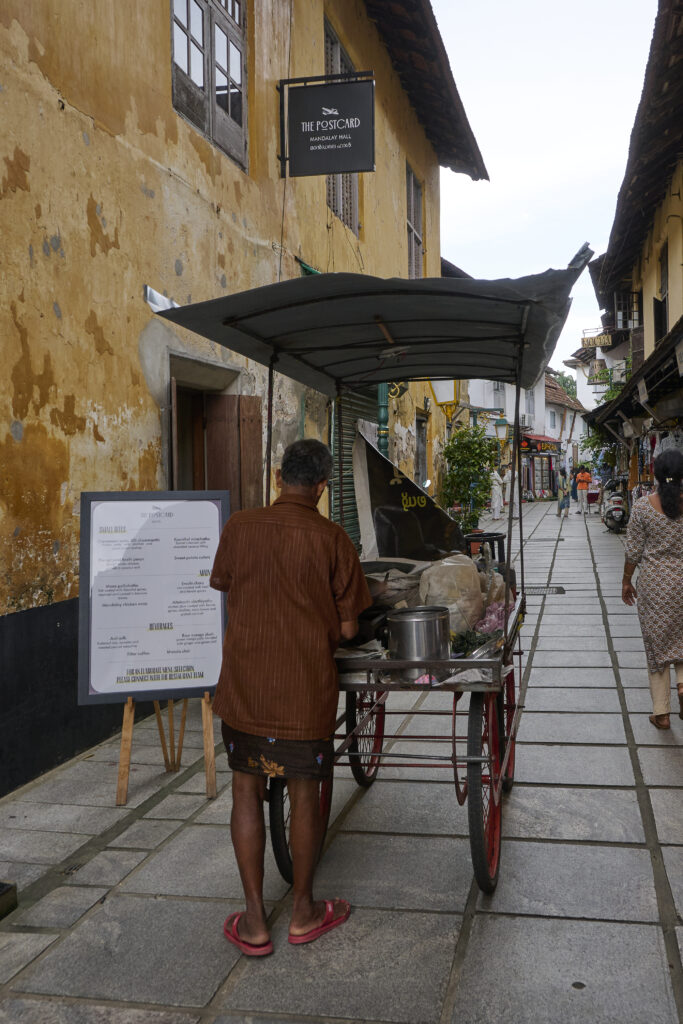
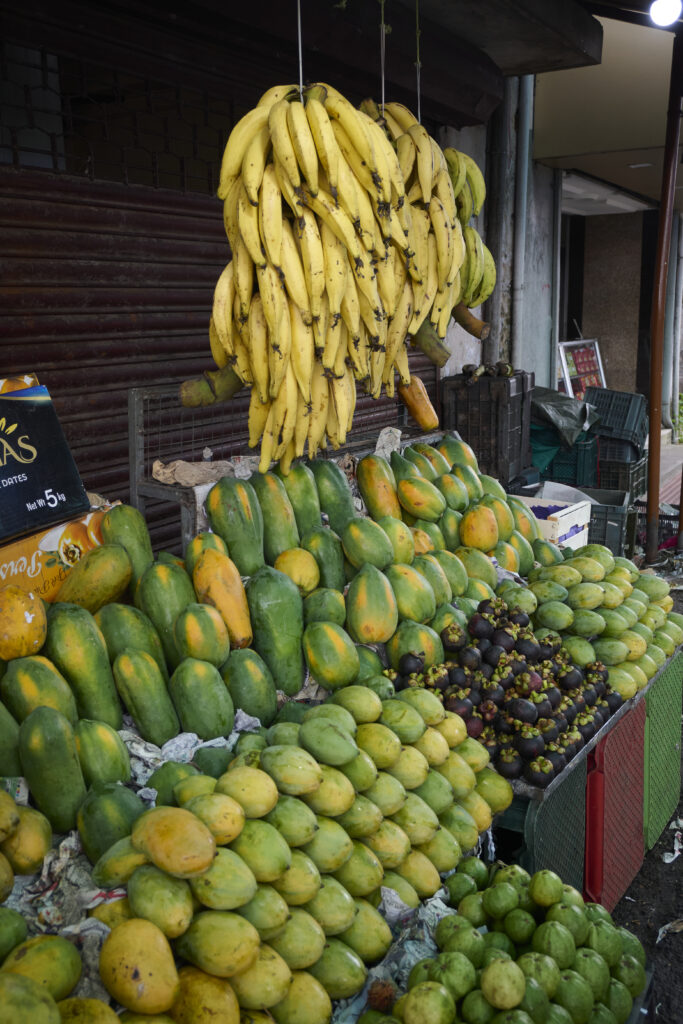
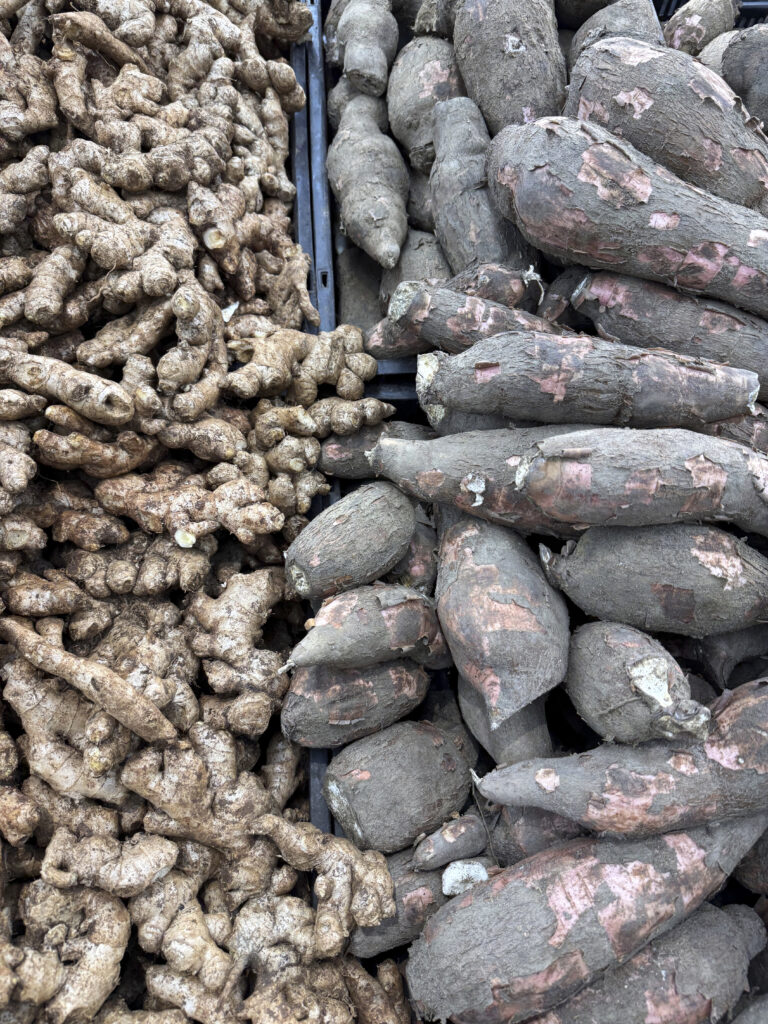
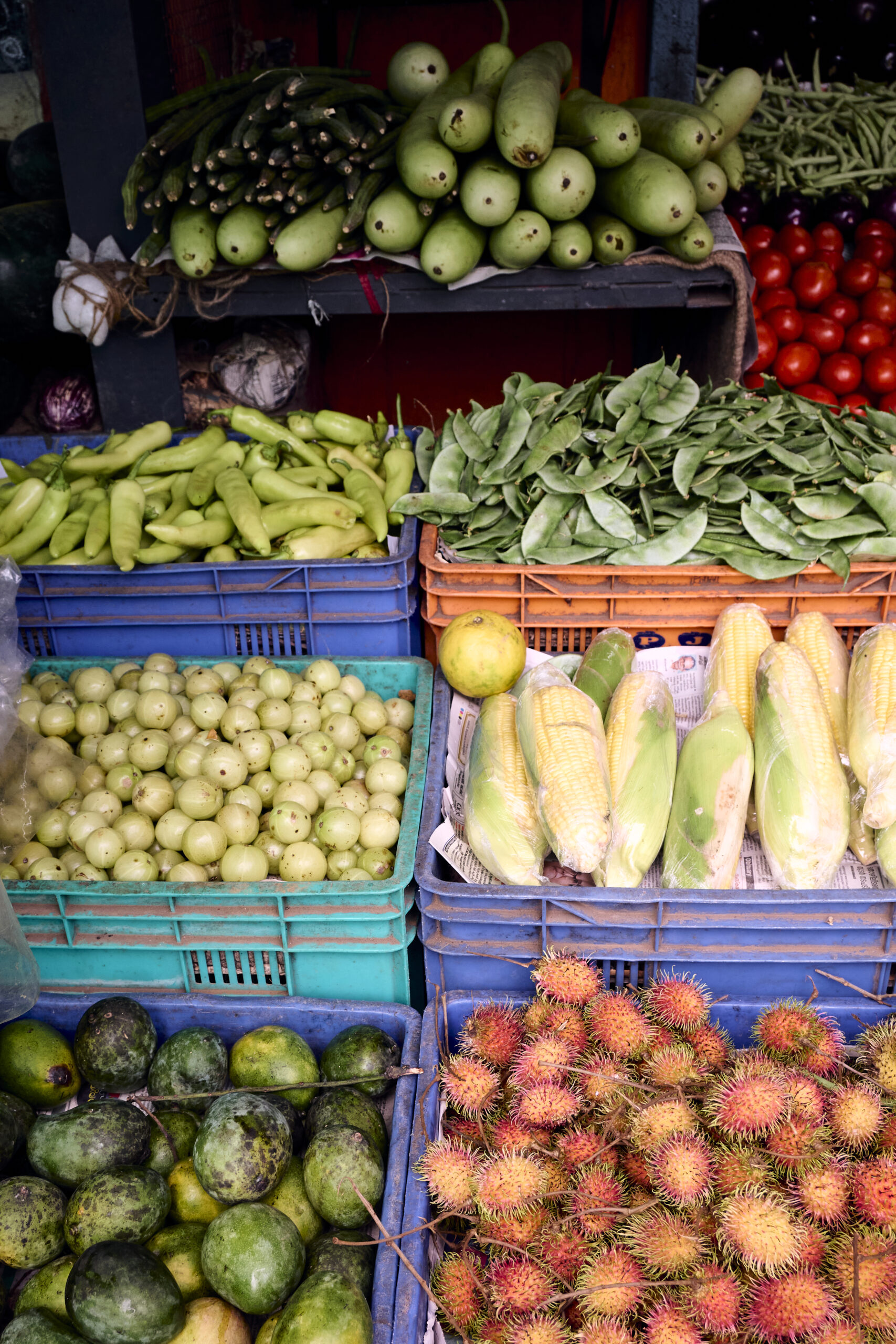
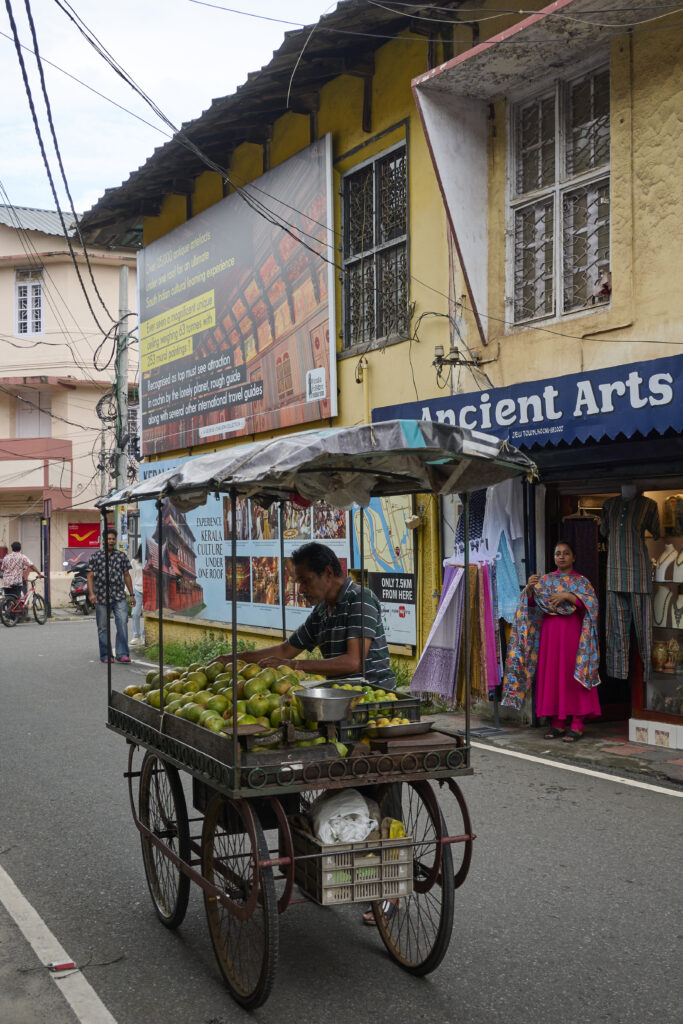
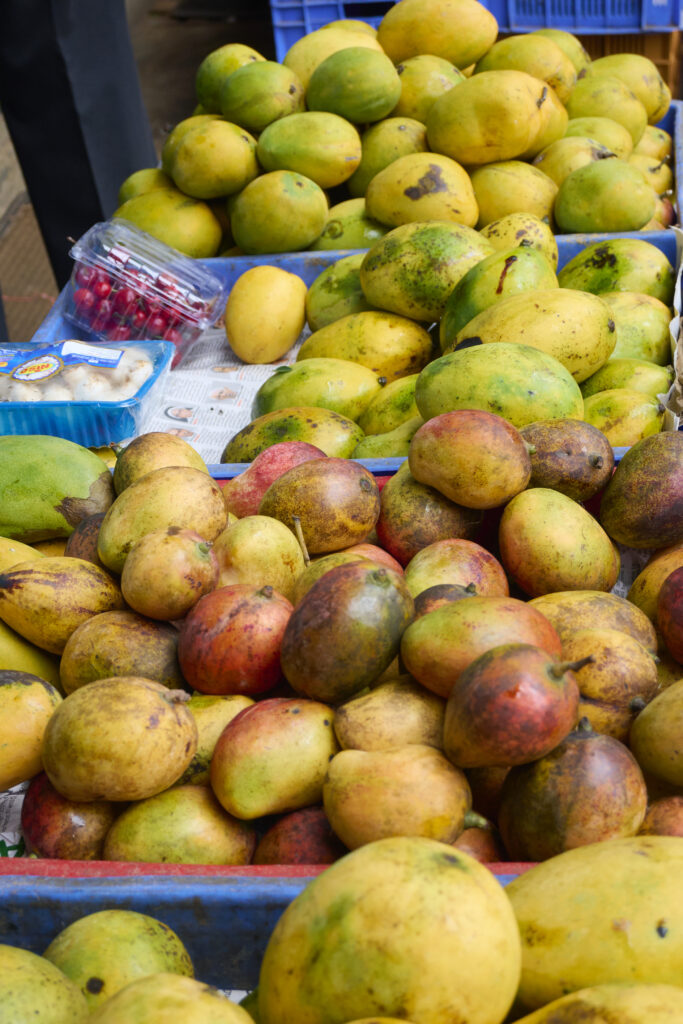
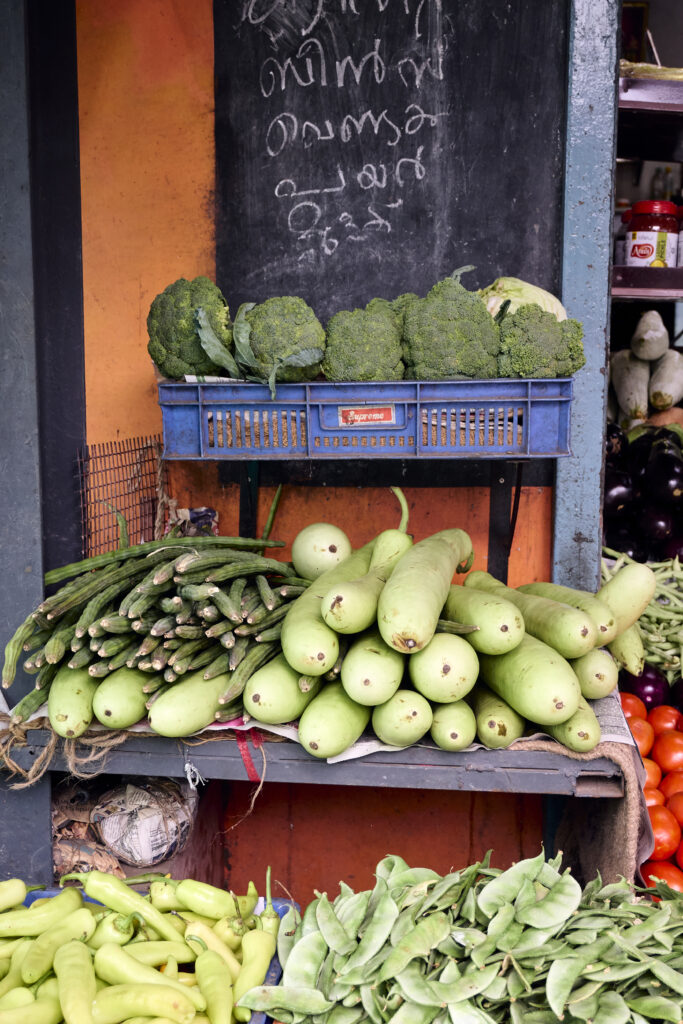
We barely scratched the surface of Kerala’s cuisine, but even in the short time, the fresh ingredients, bold spices, and unique textures offered a tantalising glimpse of the region’s culinary offerings, and I can’t wait to dive deeper next time. So much to learn!
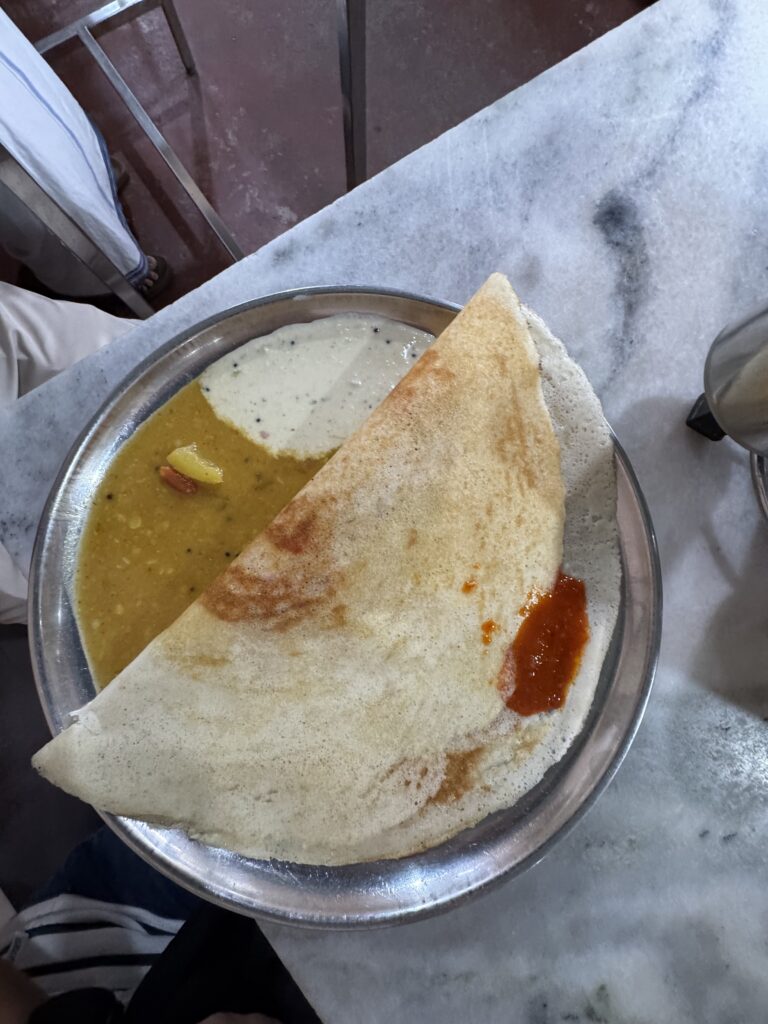
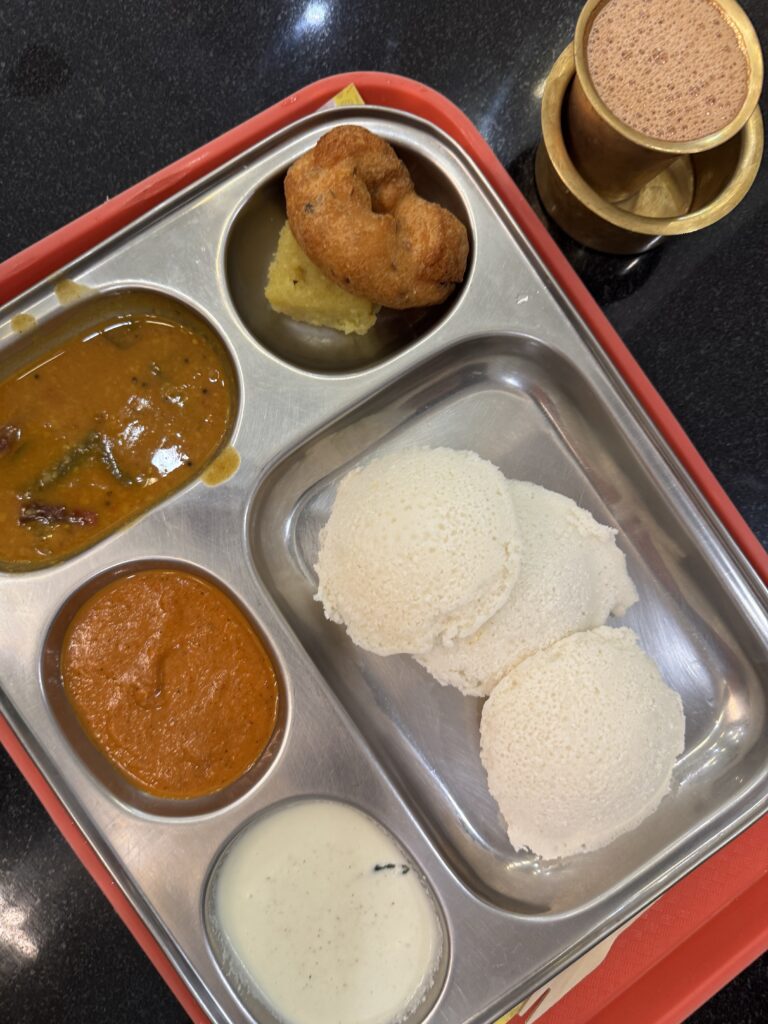
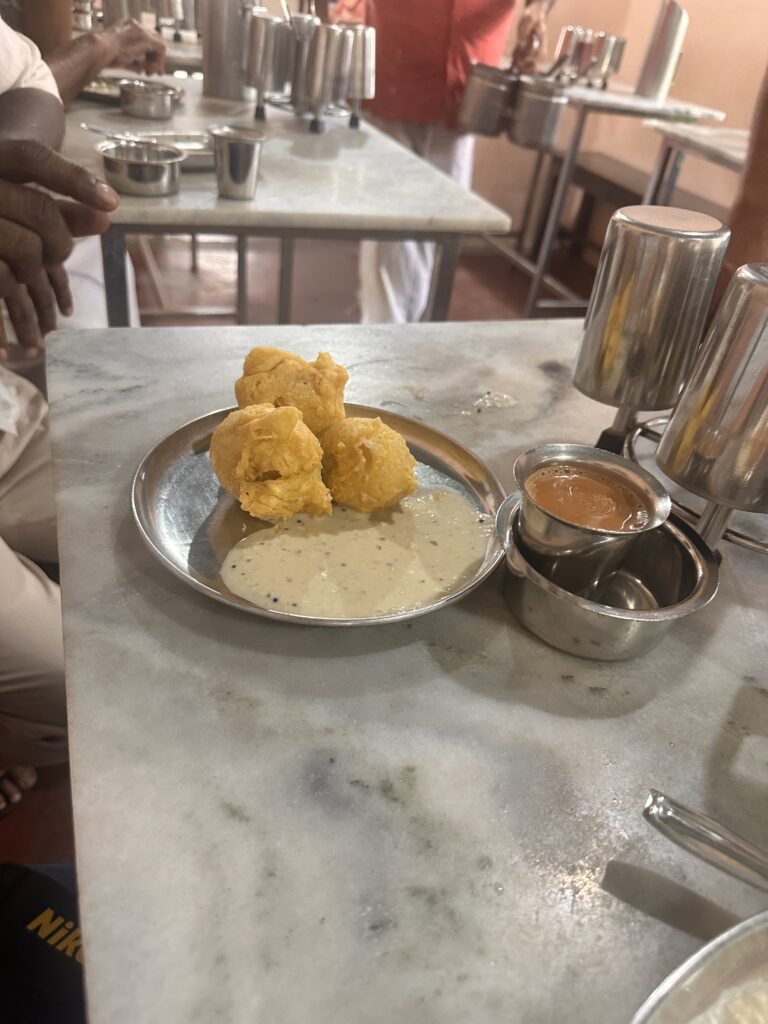
Fort Kochi is just a small taste of Kerala, an area roughly the size of Switzerland. Around Cochin, Kerala offers a mix of heritage, culture, and nature. You can visit spice farms, cruise the tranquil backwaters of Alleppey and Kumarakom, or wander the tea plantations in Munnar. Rich in history and local flavours and plenty to explore.
Even with the seemingly relentless monsoon rain in late June, the life on the streets, the hospitality and generosity of the people we met, the new flavours and colours, and the constant sense of wonder at discoveries new to me — it all left me wanting to discover more. I hope to return soon!

